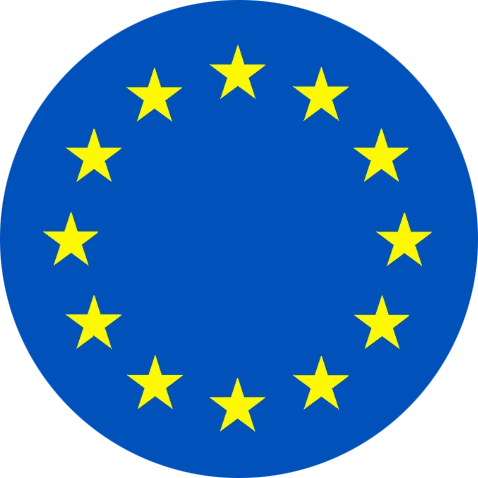Summary
- Equity markets continue to rally; commodities remain cautious
- US Treasury yields trade sideways amid election roadshows
- UK gilts follow other global markets downwards
- Eurozone bond yields edge lower on dovish comments from the European Central Bank (ECB)
- Japanese government bonds (JGB) sell off on expectations of tighter monetary policy, but are tempered by a downside surprise in Tokyo CPI
- Next week: Monetary policy decisions, key economic data releases and corporate earnings continue
Weekly Review
Equity markets continue to rally; commodities remain cautious
US Treasury yields trade sideways amid election roadshows
UK gilts follow other global markets downwards
Gilts underperformed both the US and eurozone bond markets as yields rose. The 10-year gilt yield touched 4.1%, while the two-year gilt yield rose towards 4.5%, with both maturities at six-week highs, before they eased a little on Thursday. The UK’s composite purchasing managers’ index for January was ahead of estimates and in expansionary territory at 52.5, its highest level for seven months. Public sector net borrowing declined more than expected in December to £7.8bn – approximately half the consensus forecast – owing to higher VAT and income tax receipts, and a falling cost of debt.
Eurozone bond yields edge lower on dovish comments from the European Central Bank (ECB)
Japanese government bonds (JGB) sell off on expectations of tighter monetary policy
Summary
- Surprisingly resilient US economy drives bond yields higher
- Similar tone in Europe with central bank rhetoric and inflation prints pushing yields higher; Japanese yields also rose
- Equity markets weaken on potentially delayed rate cuts by the major central banks
- Next Week: Key Inflation data, flash PMIs and key earnings releases
Weekly Review
Surprisingly resilient US economy drives bond yields higher
With this backdrop, US Treasuries struggled, and 10-year Treasury yields climbed above 4.15% to their highest level since mid-December. Fed funds futures indicated a decline in the percentage of investors expecting a March rate cut, with the figure falling to approximately 50%, from about 90% at the start of the year. Atlanta Fed President Bostic struck a cautious tone, stating that his "outlook right now is for our first cut to be sometime in the third quarter this year”. Fed Governor Waller noted they aren’t in a hurry to cut rates, stating cutting must be done “methodically and carefully”, which in turn led to the sizeable market sell-off.
Similar tone in Europe with central bank rhetoric and inflation prints pushing yields higher; Japanese yields also rose
Inflation in Japan continued to fall, with December’s consumer inflation figure fell to 2.6%, and the core rate to 2.3%. The so-called 'core-core' rate (excluding energy and food) also declined, reaching 3.7%, which helped cement expectations that the central bank won’t rush to end its negative interest rate approach. The 10-year JGB yield rose approximately 6bp to 0.67%. The two-year JGB yield dropped into negative territory at the start of the week, for the first time since July, before recovering to 0.03%. Former Bank of Japan (BoJ) official Eiji Meada gave encouragement to the hawks when he stated conditions that would allow tighter monetary policy were largely in place, although the speed of the change in policy would be gradual.
Equity markets weakened on potentially delayed rate cuts by the major central banks
With growth relatively resilient, the end of 2023 and into 2024 has been broadly a conducive environment for risk assets, supporting our allocations to equities and corporate credit. However, the shift away from early rate cuts has led to some near-term weakness in both bond and equity markets following a strong end to the year. The correlation between bonds and equities remains relatively high at present, supporting our use of total return strategies to act as an important source of diversifying returns away from more traditional asset classes.
Next Week: Key inflation data, flash PMIs and key earnings releases
Summary
- Geopolitical risks increase in the Middle East, but surprisingly have had little impact upon oil prices
- US Treasuries take December’s inflation data in their stride reflecting resilience in the US economy
- Equity markets recover from their early year sell-off, benefitting the Fund’s cyclical exposures
- Major global government bonds markets largely unchanged over the week; issuance absorbed easily
- Next Week: Political events could take centre stage with Taiwanese elections and the Iowa Caucus; earnings season starts
Weekly Review
Geopolitical risks increase in the Middle East, but surprisingly have had little impact upon oil prices
Geopolitical risks rose over the week, with air strikes from the UK and US against the Houthi rebels in Yemen escalating tension in the region. Historically, a geopolitical event like this would result in a significant increase in oil prices, although oil only rose c.2% in the immediate aftermath of the strikes. When you consider we look at assets on a risk-adjusted basis, the moves of oil are less than the Nikkei. The oil moves were also partly explained by a supply outage in Libya, Saudi Arabia's decision to cut oil prices for buyers in all regions and the ongoing risks over shipping via the Red Sea. Falling commodity prices extended beyond oil, with European natural gas and soybean prices reaching their lowest levels, contributing to positive sentiment, and aiding hopes for a soft economic landing.
US Treasuries took December’s inflation data in their stride reflecting resilience in the US economy
After the pickup in bond yields last week, US Treasuries yields drifted mildly lower over the week. The 10-year yield hovered around 4% in a relatively tight range, with signs of sizeable investor buying above 4% keeping downward pressure on yields. Yields spiked briefly after US headline inflation for December came in modestly above expectations at 3.4%, higher than the forecast 3.2% and above November’s 3.1%. However, core inflation fell from 4.0% to 3.9%. Furthermore, some of the underlying factors that surprised to the upside are not in the Fed’s PCE measure of inflation. Despite December’s higher-than-expected inflation, Fed fund futures continue to indicate an approximate 70% chance of a March rate cut. The pace of rate cuts is consistent with a recession, which is not what the current economic indicators suggest, especially when you look at employment and consumer spending. Indeed, the latest weekly initial jobless claims were down to 202k, the lowest since October last year. The Atlanta Fed's GDPNow estimate for Q4 2023 pointed to an annualized growth rate of 2.2%, showcasing solid, albeit decelerating, growth. Within our macroeconomic framework, forward-looking indicators suggest a rising economic environment, albeit a finely balanced one. If this holds, it has traditionally been a positive environment for risk assets and supports the Fund’s cyclical exposures to equities and corporate bonds.
Equity markets recover from their early year sell-off, benefitting the Fund’s cyclical exposures
Global equities rallied in aggregate over the week on continuing optimism that interest rates would soon begin to fall which trumped any negative sentiment from an escalation in tensions in the Red Sea and the higher-than-expected US inflation print. The S&P 500 rose close to its all-time high after technology stocks rebounded strongly before falling back towards the end of the week. Asian equity markets began the week trading lower due to concerns over tighter gaming regulations. However, Japan recovered through the week with the bellwether Nikkei index climbing above 35,000 for the first time since 1990.
Major global government bonds markets largely unchanged over the week; issuance absorbed easily
Benchmark 10-year bond yields in Germany, Italy and France fluctuated in a range of about 10bp. Expectations of a rate cut in March have gradually diminished in the past couple of weeks, with rate futures indicating the likelihood of a cut at less than 40%. Nevertheless, there was very strong demand for a series of sovereign bond issues from Italy, Spain and Belgium early in the week, with record levels of bids being reported. Finally, the Euro Area unemployment rate fell to 6.4% in November, its joint-lowest level since the euro's formation, challenging rate cut expectations.
Gilts traded in a narrow range, lacking any significant catalyst, following last week’s selloff. Bank of England Governor Bailey struck a cautious note, highlighting the dangers to inflation from the persistent unrest in the Red Sea and its effect on shipping and trade. However, he took encouragement from the recent fall in mortgage rates which will help to ease the burden on borrowers. In Japan the 10-year government bond fell below 0.6%, not far above the pre-Christmas low of 0.55% – the lowest level since late July, despite inflation being well above the Bank of Japan’s inflation target. The mild strength in Japanese bonds was partly driven by evidence of weak real wage inflation (-3.0% year on year in November) and December’s core inflation (excluding fresh food prices) for Tokyo – a good guide to nationwide core inflation trends – which fell to 2.1% from November’s 2.3%. This marked the lowest level since June of last year. Both figures underscore the fact that sustainable inflation in Japan remains elusive.
Next week: Political events could take centre stage with Taiwanese elections and the Iowa Caucus; earnings season starts
Markets will be focused on the US consumer next week, with releases of retail sales data and the University of Michigan consumer survey. Investors will also pay attention to the industrial production data on Wednesday and the release of the Beige Book on Wednesday. In Europe, the ECB’s December meeting report and consumer expectations will be the main topics of interest. Other notable releases include the UK’s labour market indicators and inflation data as well as the industrial production data for the Eurozone. Turning briefly to politics, the focus will be on the Taiwanese elections being held this Saturday, the Iowa Caucus in the US on the Republican side (the first nominating contest for the Presidential election) and the World Economic Forum’s annual meeting at Davos. Elsewhere in the region, China will release its Q4 GDP and economic activity indicators on Wednesday. Corporate earnings continue, key players in financials will report including Goldman Sachs, Morgan Stanley and State Street. Although earnings are likely to be positive, the focus is more likely to be upon the guidance that companies provide and any update on the read from banks as to the financial health of the consumer.
Summary
- US Treasury yields pick up in the first week of January, while US labour data strengthens
- European and UK government bond yields rise against a backdrop of encouraging growth and falling core inflation
- Equity markets begin the year on the back foot, but may rise if a soft-landing narrative holds
- Next Week: US earnings season kicks-off; economic releases include US, Japan and China inflation reports
Weekly Review
US Treasury yields pick up in the first week of January; US labour data strengthens
A major theme in markets remains the outlook for central bank policy rates, with markets increasingly focussing on an “immaculate disinflation” narrative, where inflation can fall back to target without a significant increase in unemployment caused by restrictive monetary policy. A modest easing in this narrative partly explains the backup in yields we have seen since the end of the year. Indeed, having fallen below 3.8% in December, 10-year Treasury yields climbed back above 4.0% this week.
The Federal Open Market Committee minutes for December’s meeting attempted to push back against market expectations noting that “many participants remarked that an easing in financial conditions beyond what is appropriate could make it more difficult for the Committee to reach its inflation goal”. The minutes also noted there were “downside risks to the economy that would be associated with an overly restrictive stance”.
In term of data, the US employment data was positive but did not actually help risk assets as they were more than offset by the perceived impact in higher yields. The ADP data on private payrolls revealed a +164k rise in December compared to the projected 125k. It was also the first time it had come in over consensus since the print from July and was the highest print since August. We also received the latest weekly claims data, which indicated that initial jobless claims had decreased to 202k during the week ending December 30 (as opposed to the 216k anticipated), an 11-week low. Treasury yields continued to rise today, with the 10-year yield reaching 4.05% following a larger-than-expected boost in nonfarm payrolls of 216k (versus 175k expected), and a stable 3.7% unemployment rate in December (versus 3.8% expected).
European and UK government bond yields rise against a backdrop of encouraging growth and falling core inflation
The focus between growth and inflation (and therefore the path of policy rates) was also felt in Europe, with European and UK government bond yields rising. The 10-year bund yield rose 5bp to 2.12% this week as investors became less convinced that the world’s major central banks would cut rates as early as previously expected. Eurozone headline inflation increased to 2.9% in December, while, perhaps more importantly, core inflation eased to 3.4%. From a growth perspective, more positive news stemmed from an upward revision to the European composite PMI, which increased from the flash reading of 47.0 to 47.6. Meanwhile, the European services PMI was revised up from 48.1 to 48.8. This upward surprise was widely felt throughout the euro area, erasing the PMI decline seen in the flash December reading and with services creeping up to a 5-month high.
Gilt yields followed suit as rate cut expectations were pushed out. Having fallen approximately 60bp and outperforming most other global bond markets in December, the 10-year gilt yield rose some 25bp towards 3.8%, underperforming its peers. There were also signs of falling core inflationary pressures, with global data specialist Kantar reporting a steep fall in food inflation from 9.1% in November to 6.7% in December.
Equity markets begin the year on the back foot, but could rise if a soft-landing narrative holds
Equity markets opened weaker in January, given the strong rally in Q4 leading to lowering expectations of near-term rate cuts. The Nasdaq completed a five-day losing streak for the first time since December 2022, as technology stocks bore the brunt of the selling pressure. The S&P 500 had its worst start to a year since 2015, as energy stocks lost ground following the recent retreat in oil prices . Looking forward, if the “soft landing” narrative can hold, then further positive performance can come from risk assets such as equity markets, especially those that have lagged the mega-caps, the so-called “Magnificent Seven”.
Next Week: US earnings season kicks-off; economic releases include US, Japan and China inflation reports
Next week brings several economic growth measures into the spotlight with the release of the latest US inflation report, PPI figures and consumer credit data. The focus will be on the inflation report due on Thursday as markets continue to assess the likelihood and timing of the first rate cut. Meanwhile in Europe, all eyes will be on the UK’s monthly GDP report for November. There will be numerous releases in Germany including details on trade balance and factory orders. Other notable economic data includes Industrial productions for Italy and France and sentiment indicators for the Eurozone. Over in Asia, investors will be closely watching the Tokyo CPI on Monday and China’s inflation data on Friday.
 Australia
Australia


























